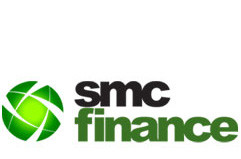Date 22/03/2024

In today's cutthroat business landscape, companies are in a perpetual quest for innovative strategies to bolster performance and realize their business objectives. Among the most potent tools in their arsenal are incentive programs, not only igniting employee motivation but also yielding tangible returns on investment (ROI). In this exploration, we'll delve into the profound impact of incentive programs by dissecting comprehensive statistics and analytics, alongside the algorithms and formulas crucial for measuring ROI.
Incentive programs are meticulously crafted initiatives aimed at galvanizing employees to achieve specific goals or objectives. These programs encompass a gamut of incentives, including monetary rewards, recognition, career advancement opportunities, and other personalized perks. A study conducted by the Incentive Research Foundation revealed that a staggering 96% of businesses incorporate non-cash rewards into their incentive programs, underscoring the prevalence and efficacy of such initiatives.
Recognition and Awards: Public acknowledgment or awards bestowed upon employees for outstanding performance or achievements. Gallup reported that adequately recognized employees are 28% more likely to stay with their company.
Career Development Opportunities: Opportunities for advancement, skill development, training, or mentorship programs. A LinkedIn survey discovered that 94% of employees would prolong their tenure at a company if it invested in their career development.
Flexible Work Arrangements: Options such as remote work, flexible hours, or compressed workweeks to enhance work-life balance. A FlexJobs report revealed that 80% of employees consider flexible work arrangements important when evaluating job opportunities.
Time Off: Additional vacation days, paid time off, or extended breaks as rewards for meeting or surpassing expectations. Oxford Economics found that employees availing themselves of time off are 30% more likely to be satisfied with their jobs.
Gifts and Prizes: Physical items like electronics, gift cards, travel vouchers, or merchandise offered to employees as rewards. An Incentive Research Foundation survey found that 75% of employees prefer tangible rewards.
Company Swag: Branded merchandise or promotional items furnished to employees as a form of recognition or appreciation. According to a PPAI study, 52% of consumers who receive promotional products have a more favorable impression of the advertiser.
Feedback and Praise: Regular feedback, positive reinforcement, or praise from managers or peers to acknowledge contributions and accomplishments. An Officevibe survey found that 82% of employees appreciate receiving feedback, whether positive or negative.
Opportunities for Autonomy: Granting employees greater autonomy and decision-making authority in their roles. Harvard Business Review's research revealed that employees with high levels of autonomy are 1.5 times more likely to be engaged.
Sense of Purpose: Emphasizing the meaningfulness of employees' work and its contribution to the organization's mission and goals. Imperative's study found that employees finding meaning in their work are 3 times more likely to stay with their organizations.
Team Bonuses: Monetary rewards conferred upon entire teams or departments based on collective performance or achieving team goals. McKinsey & Company found that companies with effective team-based incentives are 2.2 times more likely to outperform their competitors.
Team Recognition Events: Celebratory events, outings, or team-building activities to acknowledge and reward group achievements. An Achievers survey discovered that 86% of employees feel valued when their company sponsors team-building activities.
Sales Targets: Rewards tied to achieving specific sales quotas, revenue targets, or customer acquisition goals. Salesforce's research found that companies using performance-based incentives witness a 10% increase in sales productivity.
Key Performance Indicators (KPIs): Incentives linked to meeting or surpassing key performance metrics such as productivity, quality, or customer satisfaction scores. Harvard Business Review's study unveiled that companies aligning incentives with KPIs experience a 30% increase in employee performance.
Empirical evidence underscores the profound influence of incentive programs on employee performance and productivity. Research by Gallup suggests that teams effectively engaged and incentivized are a remarkable 21% more profitable than their counterparts. Moreover, a study by the Aberdeen Group indicated that companies with formalized recognition and reward programs boast a staggering 23% lower turnover rate compared to those lacking such initiatives. These statistics underscore the pivotal role of incentives in fostering employee engagement and driving superior performance.
Incentive programs serve as instrumental tools in aligning employee efforts with overarching business objectives. Data from the Incentive Research Foundation demonstrates that organizations with robust incentive programs experience a notable 22% increase in productivity compared to those without such initiatives. Furthermore, findings from the Corporate Leadership Council reveal that companies fostering strong recognition cultures witness a remarkable 31% reduction in voluntary turnover rates. These compelling statistics underscore the direct correlation between incentive programs, employee engagement, and organizational success.
Evaluating the ROI of incentive programs is paramount for gauging their effectiveness and optimizing performance. The formula for calculating ROI is:
ROI=(Gain from Investment−Cost of InvestmentCost ofInvestment) x100
Cost Of Investment
Commonly utilized metrics for measuring ROI encompass enhancements in employee performance, achievement of business objectives, cost savings, revenue growth, and levels of employee satisfaction. By meticulously analyzing these metrics, organizations can discern the impact of their incentive programs and make well-informed decisions to maximize ROI.
In conclusion, the ROI of incentive programs is unequivocally substantiated by comprehensive statistics and analytics, alongside the algorithms and formulas used to measure ROI. Through the strategic implementation and adept management of incentive programs, organizations can propel performance, cultivate employee engagement, and triumphantly accomplish their business goals. As businesses continue to prioritize employee motivation and productivity, incentive programs will persist as indispensable assets for driving success and securing a competitive edge in the dynamic marketplace.
Client Voices, Success Stories And Cherished Memories. See What Makes Our Services Exceptional Through The Words Of Our Happy Clients.

India Director
5


Director
5


Lead Trainer
5

VP - Channel Partnerships
5

COO - CPM INDIA
5


Director - SMC
5


GM- FA
5
" Discover the World, One Event at a Time ! Welcome to Stimulus World. We're more than just a agency; We're your partners in creating exceptional Meetings, Incentives, Conferences, and Events. Our commitment to excellence and personalized service is the cornerstone of our success. We understand that every event is unique, and we're dedicated to tailoring your experiences, making every moment memorable. Explore with us and unlock a world of possibilities. "
Thank you for choosing Stimulus.
Where your journey begins!
discover insights, tips, and inspiration through the curated blogs written by top professionals

